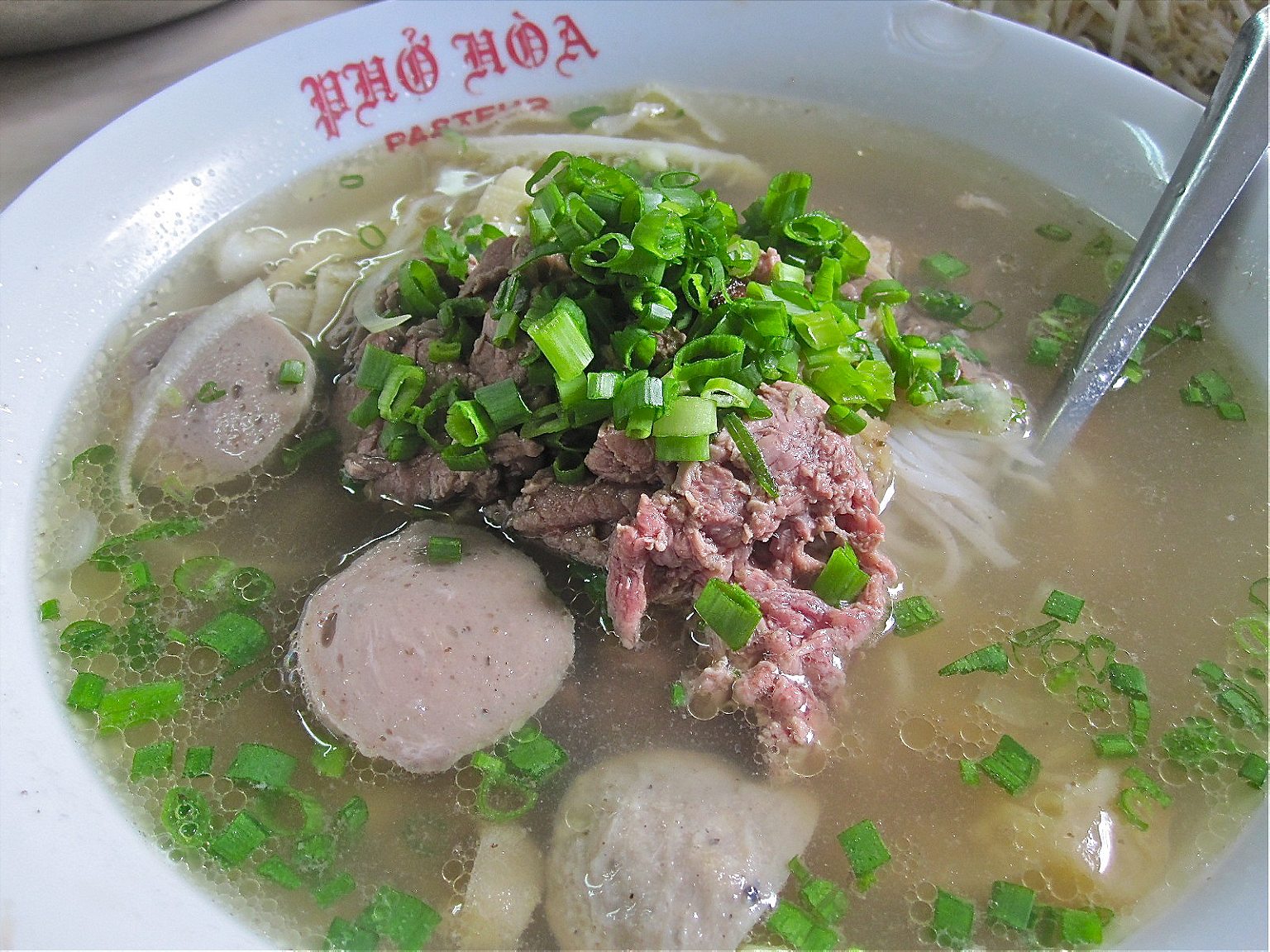The French have their fingerprints all over many of Vietnam’s greatest culinary contributions, including this bowl.
It’s a tough forkful to swallow, but it’s pretty damn true: colonization makes for the most interesting food. After all, it took the fastidiousness of the French to turn Vietnam’s ridiculous bounty into one of the world’s greatest cuisines: bahn xeo, the crispy coconut crepe overstuffed with pork and shrimp and bean sprouts, bahn mi, the pate-slathered sandwiches made on crispy, light baguettes, ca phe sua da, that ying and yang combination of thick, inky coffee and sweetened condensed milk.
And, of course, pho, one of the greatest fusion foods of all.

The best bowls of pho contain a chewy-tender combination of meat: shredded shank or brisket, gelatinous pieces of tendon, compact meatballs with a spring to their bite, and squiggles of lean raw beef, thwacked into submission with the weight of a cleaver so that they cook on contact once the hot broth is ladled in.
About that broth: It is one of the most complex, beguiling tastes in the world, a dark, brooding mixture of slow-simmered beef bones and charred aromatics and warm currents of toasted clove and black cardamom. Taking after the French, the pho cook works hard to keep the broth clean and clear as the fat and marrow are boiled out of the meat melange. But if you look closely, you can see the little globules shimmering on the surface, a reminder that there’s always just a little life left in that beef. That might not fly in Paris, but in Saigon, that’s exactly how it’s supposed to be.